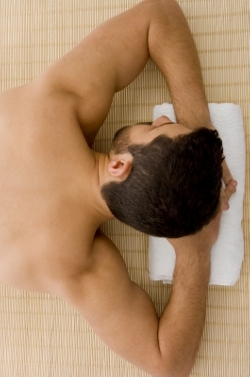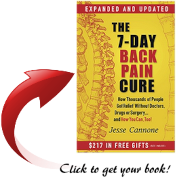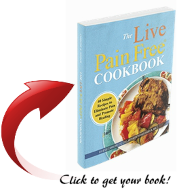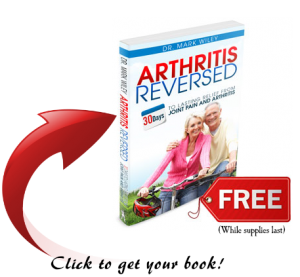 Did you know that there are a lot of people in the U.S. that’s suffering from chronic pain? Though the numbers range from 70 to 150 million people, the bottom line is the fact that there are a lot of people living in pain in America! And this type of pain isn’t your normal “ouch!” that goes away after a few minutes or hours. Nope. Chronic pain is this nagging, stubborn and persistent pain that does not heal by itself, and moreover, does not respond to those standard pain relief treatments.
Did you know that there are a lot of people in the U.S. that’s suffering from chronic pain? Though the numbers range from 70 to 150 million people, the bottom line is the fact that there are a lot of people living in pain in America! And this type of pain isn’t your normal “ouch!” that goes away after a few minutes or hours. Nope. Chronic pain is this nagging, stubborn and persistent pain that does not heal by itself, and moreover, does not respond to those standard pain relief treatments.
It’s so ironic that with advances in medical technology that we cannot deal with this growing health problem in the U.S., and moreover, that there is an increase of people who are suffering from pain … not a decrease in numbers! So the million dollar question is, “WHY?”
Pain Relief In OTC or RX Drugs?
What do most people do in terms of pain relief? If you said look into the medicine box or cabinet and grab good ole’ Tylenol or any available pain relief drug, then you’re absolutely correct. As a society, we have been conditioned to go for the pain relief drug whenever we feel pain coming on. Such drugs are commonly known as acetaminophen, non-steroidal anti-inflammatory drugs (aka “NSAIDs”), and COX-2 inhibitors.
You probably seen acetaminophen on those Tylenol bottles, right? Yes, it’s a temporary treatment for pain relief and fever, however,  if you consume more pills/caplets as recommended, you run the risk of liver or kidney problems.
if you consume more pills/caplets as recommended, you run the risk of liver or kidney problems.
Popular pain relief drugs like Advil, Ibuprofen and Aspirin are part of the NSAIDs category. They’re known for their quick and effective work on relieving acute pain, however, they may also cause GI (aka “gastrointestinal”) bleeding. The GI or disgestive tract consists of the esophagus, stomach and all the way through the anus. NSAIDs may also compound health issues if an individual has kidney disease or hypertension.
COX-2 inhibitors work just as well as NSAIDs. Even though these drugs are much more gentler on your GI tract, various reports of individuals experiencing strokes and heart attacks have caused the drug Vioxx to be removed from the store shelves. Another COX-2 inhibitor drug called Celebrex is also under close scrutiny with the FDA.
Isn’t it ironic that there are a ton of pain relief drugs out in the market, however, none of them has positive effects on your health? Bottom line, these drugs do not heal the pain, they are only good at masking the pain.
Pain Relief Is Found In Healthy Lifestyle Changes
Okay, pain relief drugs have their place in life. However, they should be used on a temporary, as-needed basis only. You should focus on understanding the pain problem, and seek proactive ways to relieve pain as well as prevent pain. Understand that long lasting, drug-free pain relief is possible through healthy lifestyle changes. And the great thing is that you can accomplish them via simple changes, which you can leverage for great gains!

Pain Relief Tip #1 – Stay at healthy weight levels
There’s so much “goodies” today, it’s easy to get tempted and not think about eating good, heathy food. Okay, let’s bring this home, and for starters, let’s cut down on sugary snacks and sodas, processed polyunsaturated oils, and increase your use of saturated fats (palm or coconut oil), protein and fiber. Palm or coconut oil is the least infammatory in your body when it comes to oils, and thus, you should start using those to cook with.

Pain Relief Tip #2 – Get a good night’s sleep
For good health, you should have between 7 to 9 hours of z’s … that is, sleep! Experts suggest that having a good night of sleep keeps systemic inflammation in check.
Pain Relief Tip #3 – Relax
One of the best ways to relax, relieve and manage stress is performing breath meditation. Do it twice a day, upon waking up, and when you’re ready to call it a night. You want to first clear all negativity from your mind, and focus on your breathing, sensing the air flow from your nose all the way down to your toes.
Pain Relief Tip #4 – Exercise regularly
 If you can squeeze in a 30-minute workout session three to five times a week, that will be great. The ideal exercise? Well, you ask 5 fitness experts and they may give you 5 different responses! Some say a brisk walk on some days and some resistance (bodyweight) exercises on other days are good. Squats and lunges are known to provide a great overall workout, too. I guess the key is to just get out and get your blood pumping!
If you can squeeze in a 30-minute workout session three to five times a week, that will be great. The ideal exercise? Well, you ask 5 fitness experts and they may give you 5 different responses! Some say a brisk walk on some days and some resistance (bodyweight) exercises on other days are good. Squats and lunges are known to provide a great overall workout, too. I guess the key is to just get out and get your blood pumping!
Pain Relief Tip #5 – Seek out “manual” therapies
When I refer to “manual” therapies, I am talking about massage and chiropractic treatments that mobilize and/or manipulate your joints, or other forms of treatment for musculoskeletal pain. These therapies help keep your body relaxed, flexible, and most importantly pain free. They focus on increasing blood flow to the areas of pain by removing or minimizing “trigger points” and spasms. The increased blood flow  to those target areas provides the much needed oxygen and nutrients, which in turn, helps ease the pain sooner and improves the recovery time.
to those target areas provides the much needed oxygen and nutrients, which in turn, helps ease the pain sooner and improves the recovery time.
Pain Relief Tip #6 – Seek out alternative therapies
There will come a day when you may need to seek out alternative therapies, that is, if your life style changes have come a bit short with minimizing the pain you are still experiencing. Here are some examples of such therapies:
- Rolfing
- Acupuncture
- Alexander Technique
As always, do your due diligence, do your research and find a holistic healing method and practitioner that will meet your immediate and long-term needs.

Pain Relief Tip #7 – Natural homeopathic remedies
When your pain is on-going and chronic, another option is to turn to natural homeopathic products. Homeopathic external rubbing remedies may contain systemic proteolytic enzymes, which when applied offer effective pain relief. These remedies provide nutrients, oxygen and fresh blood to the area of pain, enhancing the healing process, while removing metabolic waste from the tissues and blood.
Wow, that was a mouthful, huh? And I hope you found some valuable information you can take and use. What it boils down to is that you should not rely solely on OTC and RX drugs at the first instance of pain. Yes, it’s easy to go grab that Tylenol in your medicine cabinet and gulp down a few caplets. Unfortunately, the long-term use of OTC and RX drugs cause more harm than good. So, your best bet is to use them in emergency situations and for the short-term. Nothing beats your efforts on changing your lifestyle to affect pain relief on a more healthy, natural, and long-term basis. That, my friend, maybe considered the best of all medicines when it comes to pain relief.
Images compliments of FreeDigitalPhotos.net



